Table of contents
Brewer's yeast is a pure culture of Saccharomyces cerevisiae, which was originally only used to make beer. The "waste product" of beer production is an inactive yeast and is now used in some cosmetic products, to season dishes and as a food supplement (similar to brewer's yeast) . Active brewer's yeast can also be used for baking, but here it is mainly fresh or dried baker's yeast that dominates.
Use in the kitchen:
Active brewer's yeast of the Saccharomyces cerevisiae strain in pure culture is particularly suitable for the fermentation of beer, cider, wine and vinegar.
Can you bake with brewer's yeast? Although you can't brew beer with normal baking yeast, you can definitely bake with brewer's yeast. The hop flavor is not too intense with 5-10 g of yeast per 1 kg of flour. Brewer's yeast is more suitable for bread or cakes, but less suitable for pastries. It is important that the dough rests for a long time.
Brewer's yeast flakes give dishes a spicy, slightly cheesy flavor, similar to yeast extracts . Brewer's yeast flakes have a higher protein content than traditional yeast flakes and a more intense, cheese-like flavor. The glutamic acid they contain is responsible for the umami flavor of brewer's yeast. It is ideal for seasoning salads and cold or warm vegetables or as a cheese substitute for gratin. Brewer's yeast gives spreads or pastes a unique flavor.
Cooked dishes such as soups and sauces can also be excellently thickened with the brewer's yeast flakes.
Types of yeast and their use:
When it comes to use in baking, fresh baking yeast (compressed yeast) and baking yeast (active dry yeast) are the main options. While fresh yeast is characterized by a stronger leavening power and is therefore well suited for baking preparations with long rising times (and the associated resting phases), dry yeast scores points for its durability and ease of use (dosage, mixability, etc.).
In addition to being used as a natural baking agent, yeast fungi are also used as a food supplement or seasoning due to their high content of glutamic acid and B vitamins - as is the case with yeast flakes (noble yeast ). However, as noble yeast is an inactive form of yeast, it can no longer be used for baking. These fungi can also be found in highly concentrated form and as a spread in the form of yeast-based spice pastes - a very intensely flavored yeast extract made from lysed yeast cells (produced by cell wall destruction).
Brewer's yeast, originally used in beer production, strikes a balance between being a leavening agent, food supplement, cosmetic product and intestinal flora sanitizer - depending on the processing (active, inactivated, etc.) in which it is used or consumed.
Recipe for vegan green spelt spread:
Ingredients: 250 g green spelt (1 cup), 500 ml water (2 cups), 2 cloves of garlic , 3 onions , 1 tbsp margarine (or refined rapeseed oil ), 1 green bell pepper , 3 carrots , 3 tbsp brewer's yeast, 1 can of cooked chickpeas (drained approx. 180 g), 4 pickles, 1 pinch of sea salt , 1 pinchof black pepper , 1 tbsp soup seasoning (instant vegetable stock) .
Preparation: Heat the margarine or oil in a pan, add the green spelt and sauté a little, then pour in the water and cover. Chop the garlic and onion and add to the pan along with the chopped vegetables. Add the soup seasoning, salt and pepper and cover and sauté for about 30 minutes (or according to the instructions on the green spelt packet).
Then add the chopped gherkins, peeled chickpeas and brewer's yeast to the pot with the green spelt and mix finely with a hand blender. A stand mixer is also good for this. Taste the spread and add seasoning if necessary. Pour into small bowls and leave to cool in the fridge. It will also keep in screw-top jars in the fridge for a few days or you can freeze it. The spread goes well on bread, sandwiches or as a dip for vegetable sticks.
| Not only vegans or vegetarians should read this: Vegans often eat unhealthily. Avoidable nutritional mistakes . |
Shopping - where to buy?
Brewer's yeast is rarely available from supermarket chains such as Denner , Volg , Aldi , Lidl , Hofer etc. Selected supermarkets such as Coop , Migros , Spar , Rewe or Edeka sometimes offer inactive brewer's yeast as flakes or granules. Pharmacies or drugstores also stock brewer's yeast as active brewer's yeast for brewing beer - or as inactive yeast in tablets or capsules as a dietary supplement.
Since genetically modified products are permitted for the cultivation of conventional yeasts, we recommend buying organic brewer's yeast. You can definitely find organically produced brewer's yeast in health food stores, organic shops, organic supermarkets or in online shops.
Liquid brewer's yeast is mainly used in cosmetics or naturopathy. 1
Storage:
Fresh yeast products will last up to 14 days at 2-8 °C. Dried brewer's yeast should be stored in a dry, light-protected container in an airtight container. 1
Ingredients - nutritional value - calories:
Brewer's yeast is a very good source of folic acid : 100 g contain 3170 µg. Hardly any other food provides more of it. The German Nutrition Society ( DGE ) recommends that a "normal" adult take 300 µg of folic acid daily, 2 which means that around 9.5 g of brewer's yeast covers the daily requirement.
Thiamine (vitamin B 1 ) is also very well represented in brewer's yeast: 12 mg/100g. Women are recommended to take around 1 mg of thiamine per day (men 1.1-1.3 mg). This means that around 8.3 g of brewer's yeast also covers the daily vitamin B 1 requirement. Brewer's yeast provides around 57 mg of niacin (vitamin B 3 ) per 100 g. This is similar to the value of dried porcini mushrooms , which contain 53 mg/100g. 3
Does brewer's yeast contain vitamin B 12 ? Brewer's yeast contains only a very small amount of vitamin B 12 , at 0.1 µg/100g. In addition, the vitamin B 12 it contains is not bioavailable.
Brewer's yeast contains almost 50% protein, which is made up of valuable amino acids. The proportion of the mineral phosphorus in brewer's yeast is also very significant at 1900 mg/100g. In comparison, dried pumpkin seeds provide around 1233 mg. Brewer's yeast contains a similar amount of the trace element iron (18 mg/100g) to curry powder (19 mg). Other macro and micro nutrients in brewer's yeast worth mentioning are potassium , magnesium and zinc . 3
You often read that brewer's yeast contains selenium and chromium. It is very difficult to find out how much chromium or selenium brewer's yeast actually provides. However, the amount is probably so minimal that these nutrients are not significant for our daily diet. It is a mistake to say that brewer's yeast is even a good source of chromium. 4 The daily requirement of chromium is very low at 100 µg. The daily requirement of selenium can be covered very well with Brazil nuts.
Health aspects - effects:
How healthy is brewer's yeast? According to manufacturers, brewer's yeast as a dietary supplement is good for the immune system, metabolism, muscle tissue, organs and the nervous system.
Is brewer's yeast good for the intestines? If you are constipated, taking brewer's yeast improves the intestinal flora. A closely related yeast, Saccharomyces boulardii , is used in medicine as a probiotic drug against diarrhea, to improve general well-being and for hair loss. 5 The positive effect on skin diseases is somewhat controversial, as brewer's yeast can lead to skin problems in some people.
Dangers - Intolerances - Side effects:
Healthy people usually have no problems with the food supplement brewer's yeast. However, an overdose can still lead to diarrhea. Side effects such as stomach pain or headaches sometimes occur in combination with sugar. The combination of these substances can trigger a fermentation process in the stomach, even if the yeast is inactive. The symptoms usually disappear after you stop taking the product. If not, you should consult a doctor. 7
There are yeast allergies or hypersensitivity reactions. If you react to yeast, avoid yeast flakes or products containing yeast extracts. Common reactions include blisters in the mouth, itching, rashes on the lips or face. Some people also react with respiratory problems, a runny nose, sneezing or red eyes. 8 If you are allergic to mold, you should also avoid brewer's yeast products.
Yeast extract is very high in histamine, which is something that people with histamine intolerance must be aware of. Yeast flakes, on the other hand, are tolerated very well by some people. Everyone has to test this for themselves. 8
Brewer's yeast also contains a high proportion of purines. People who are sensitive to foods containing uric acid and/or suffer from gout should avoid brewer's yeast.
Brewer's yeast contains a lot of glutamic acid (a naturally occurring amino acid), which gives it its unique taste but can cause intolerance reactions in some people.
Brewer's yeast usually has a high gluten content. If it does not contain gluten, this must be explicitly stated.
Folk medicine - natural medicine:
Brewer's yeast has been used in natural medicine for as long as beer has existed. However, the yeast was only detected in the early 19th century. Brewer's yeast is used both internally and externally as a remedy for eczema, boils, skin fungus, poorly healing wounds or as a beauty treatment for skin, hair and nails. 6 As an old home remedy for acne and spots, it is recommended to apply brewer's yeast - mixed into a paste or a mask - to the skin.
Occurrence - Origin:
Yeasts have been known since ancient times for the purpose of beer production and are among the most important microorganisms for humans. Their use as a baking agent can also be traced back to this time. 9
Production of brewer's yeast:
Since the invention of the beer filter by Lorenz Adalbert Enzinger, it has been common practice to filter out the yeast from the beer, which makes the beer last longer. Originally, these residues were used. Today, brewer's yeast, which is used as food or in cosmetics, is produced in a specific fermentation process. Yeasts are single-cell fungi of the species Saccharomyces cerevisiae, in a pure form. Brewer's yeast is propagated by fermenting malt and sugar.
When producing yeast, biotechnology uses multi-stage processes with molasses as the culture medium. In about 11 days, a starting mass of about 8 mg can be increased to almost ten billion times the yeast mass (about 33 doublings). 1 Once dried and powdered, the brewer's yeast is pressed into flakes or tablets and sold commercially. 10
Danger of confusion:
Inactive brewer's yeast is most likely to be confused with brewer's yeast and used in a similar way. Brewer's yeast is also inactive dry yeast (it is also called nutritional yeast). As Wikipedia points out, this yeast, which is no longer enzymatically active, comes from grain and is mainly used as animal feed or for culinary purposes with its tasty aroma. 5 The same use is also possible with inactive, dried brewer's yeast in the form of small flakes.
General information:
Brewer’s yeast ( Saccharomyces cerevisiae ) comes from Latin and refers to the top-fermenting beer yeast. In the 18th century, bakers received top-fermenting beer yeast from the breweries and were able to use it to make finer pastries (instead of using wild yeast or sourdough). Bottom-fermenting beer yeast, on the other hand, is not suitable for making bread. 5
Various Saccharomyces species are used to make beer. Top-fermenting yeasts work at temperatures well above 10 °C and bottom-fermenting yeasts usually work at temperatures below 10 °C (depending on the yeast strain!). Top-fermenting yeasts only ferment up to 30% of raffinose; they lack an enzyme (melibiase). Bottom-fermenting yeasts can ferment raffinose completely. 11
There are various ways of making yeast dough: With direct yeast management, the ingredients (flour, water, yeast, salt, etc.) are processed directly into a dough. With indirect yeast management, the yeast is multiplied in a well-ventilated pre-dough at temperatures of around 25-27 °C. The remaining ingredients are then worked in to form the main dough. Saccharomyces cerevisiae are also used in the production of sourdough, along with lactic acid bacteria. 11
Alternative names:
Brewer's yeast is known in English as brewer's yeast, yeast or as Saccharomyces cerevisiae . Baker's yeast is also called Backhefe, Barme, Gest (North German), Germ (Austrian) and in English it is known as budding yeast or beaker's yeast.
Keywords for use:
Brewer's yeast is also used in veterinary medicine. Horses, dogs and cats are often given brewer's yeast to ensure that they are supplied with the most important B vitamins, to stabilize the gastrointestinal tract and to strengthen the immune system. In addition, the yeasts of Saccharomyces cerevisiae can bind heavy metals such as zinc, copper, cadmium, uranium, etc. and thus help to remove them from the waste water (biosorption). 12
Literature - Sources:

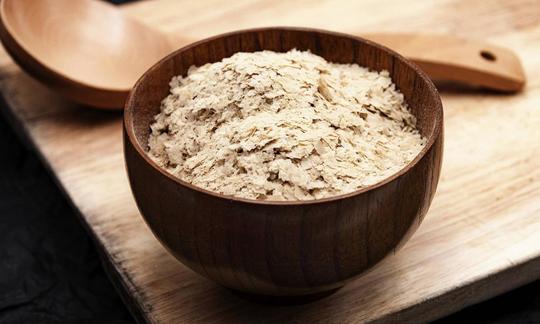

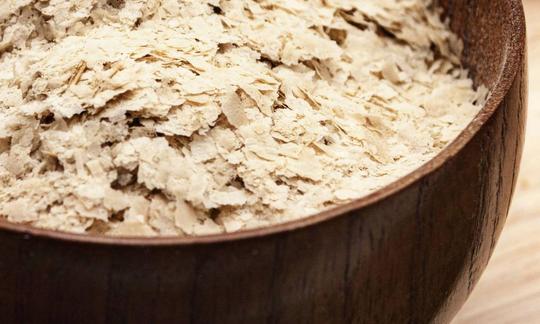

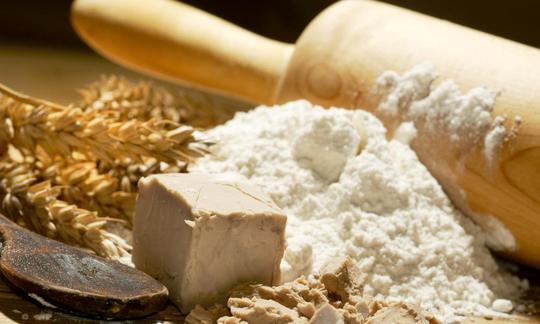


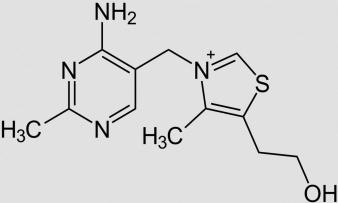
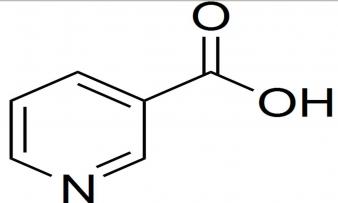


Comments